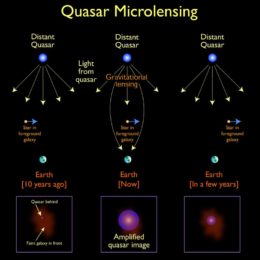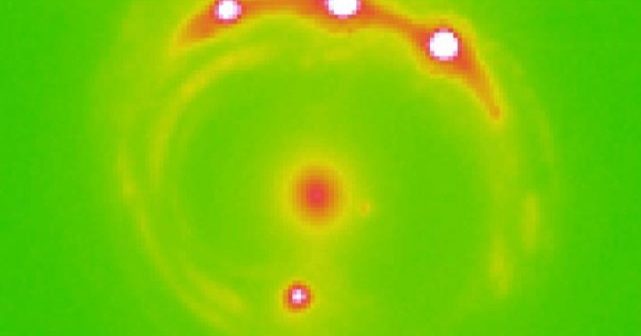Editor’s note: In these last two weeks of 2018, we’ll be looking at a few selections that we haven’t yet discussed on AAS Nova from among the most-downloaded papers published in AAS journals this year. The usual posting schedule will resume in January.
Probing Extragalactic Planets Using Quasar Microlensing
Published February 2018
Main takeaway:
Two scientists from University of Oklahoma, Xinyu Dai and Eduardo Guerras, have discovered a population of free-floating planets beyond our own galaxy. They achieved this by analyzing the microlensing of a background, bright, supermassive black hole in Chandra X-ray Observatory images.
Why it’s interesting:

If Dai and Guerras’s models and interpretations are correct, then this marks the first time we’ve ever discovered planets outside of our own galaxy. If these unbound planets in the lensing galaxy are Moon- to Jupiter-sized, the authors’ models suggest a population of about 2,000 planets per main-sequence star in the lens galaxy — all of which lie 3.8 billion light-years away from us.
What this means for future observations:
With microlensing, the details of a foreground object (here, the lens galaxy) can be determined as it lenses a background source (here, the supermassive black hole of a bright, distant quasar). By modeling the signal, we can tease out a surprising amount information — even about small objects that lie at enormous distances. Dai and Guerras’s discovery shows the power of microlensing for making detections that are well out of reach of other approaches, like direct observations or transits.
Citation
Xinyu Dai and Eduardo Guerras 2018 ApJL 853 L27. doi:10.3847/2041-8213/aaa5fb
